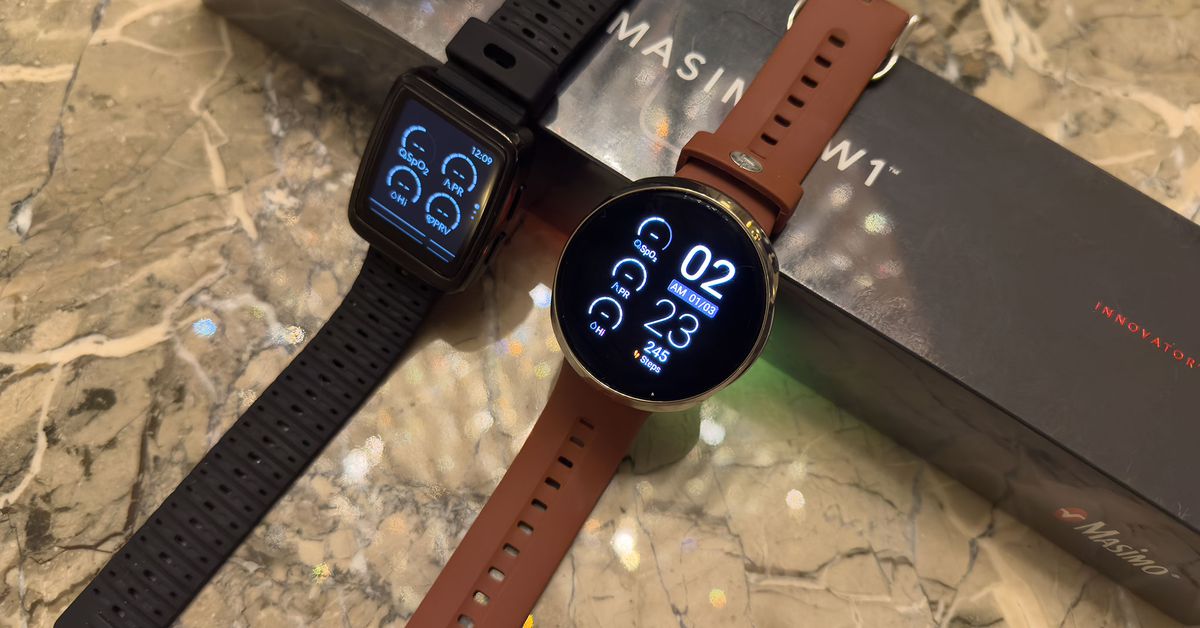How is the Masimo W1 smartwatch different from other smart watches? The view from the CES floor to the next few years on how smart watches can be
Focusing on smarter features is a change in strategy for Masimo — because, technically, the company has tried its hand at smartwatches before. The Masimo W1 launched last year to little, if any, fanfare. The W1 was more focused on the health side. It received FDA clearance for blood oxygen and pulse rate but was lacking on the smart and productivity side. Goldberg says that the W1 is a kind of device for an elderly relative who is concerned about their health and not someone who likes their tracker acting as an extension of their phone. Even though it looks like an Apple Watch, the W1 is more of a fitness band to the Freedom’s smartwatch.
Goldberg says it is adding convenience that a consumer is used to having. There are features like notifications and timers that will be part of the Freedom. On the health front, it also features insights into sleep and stress.
I saw the bones of a fairly basic watch. There wasn’t much to go through in the software, it was a prerelease version that was not ready for prime time. The platform was still evolving as a prototype.
“Even as technology in general gets better, we need to create an expectation of what accuracy and ‘continuous’ [monitoring] actually means. You go to the CES show floor and in digital health, ‘continuous’ is everywhere, but I don’t necessarily believe they’re all truly continuous,” Goldberg says. “You want to know where’s the good data, where’s the bad data, and then how do you as a health professional actually work with that data? That is where all this is going.
Goldberg is correct about the ways other watches do their health readings. Many big-name wearables don’t actually scan for your heart rate (or blood oxygen) each second; many opt to prioritize battery life by measuring once every few minutes. Other companies are trying to make this distinction a selling point, too: Movano was at CES this year touting the accuracy of it medical-grade smart ring, and a few years ago, Omron showed up with an FDA-cleared smartwatch capable of measuring your blood pressure.
Whether it’ll continue to stand out depends on if the watch can hold its own when it launches later this year — and, perhaps, whether the Apple Watch has its blood oxygen feature back.
Apple Cancels Trade Commission Action against a Health Feature for a Breathing Sensor that Can Read Someone’s Pulse
Even the most powerful companies have obligations to respect intellectual rights of American inventors, as evidenced by the court’s decision to reestablish the feature ban, according to a statement by the Masimo founder.
Instead of banning the watches outright, the court granted Apple permission to continue selling the watch as long as changes were made to remove the technology at the center of the patent fight.
Apple claimed they believe the Federal Circuit should reverse the trade commission’s decision.
According to the tech giant, customers who purchase the watches in the U.S. will still be able to see Apple’s Blood Oxygen app on their devices, but when tapped, users will get a message saying the feature is no longer available.
Apple decided to drop the health feature after losing a patent case brought by the medical technology company Masimo, which alleged that Apple infringed on its patent for a blood oxygen sensor that can read someone’s pulse. The allegation is denied by Apple.
